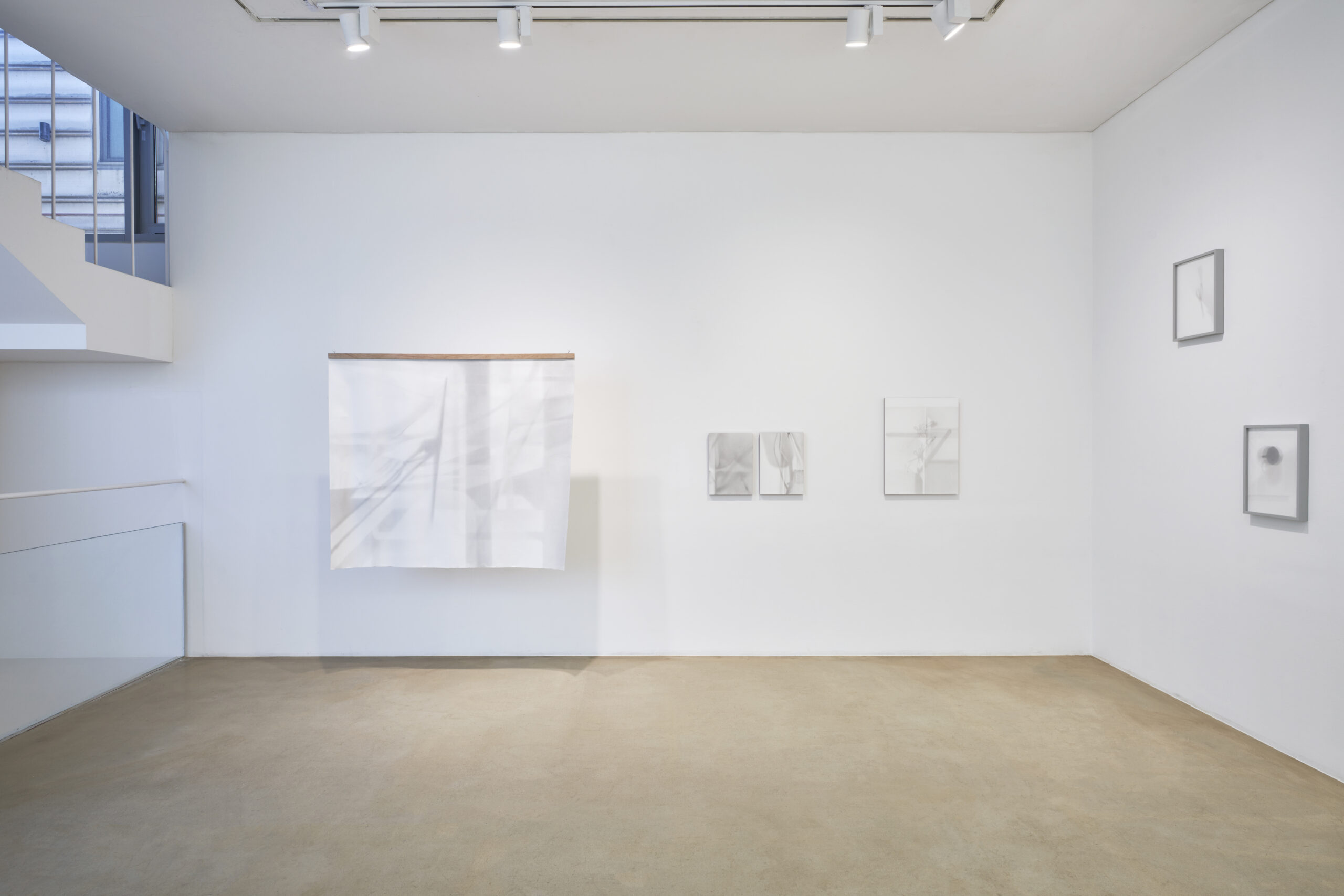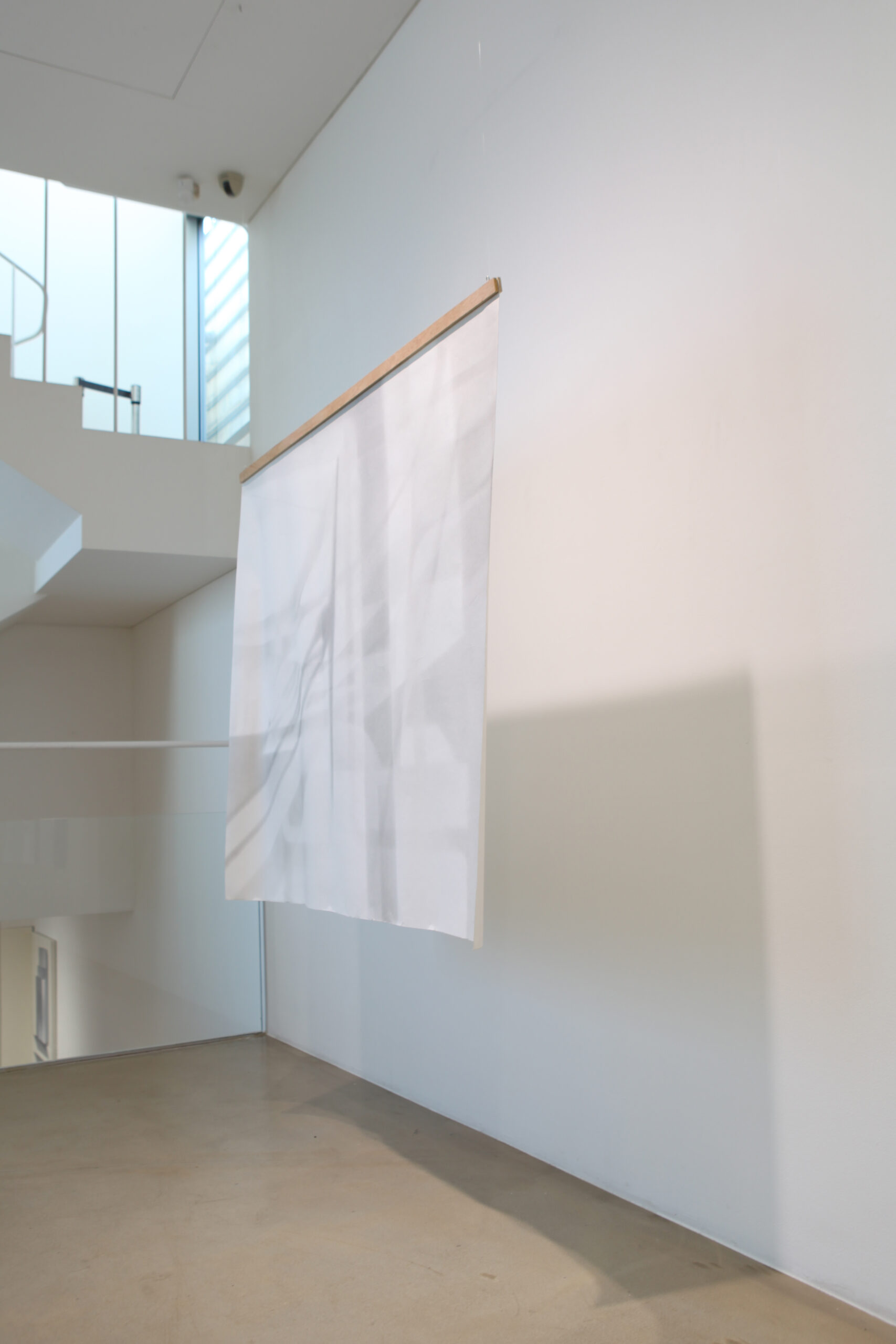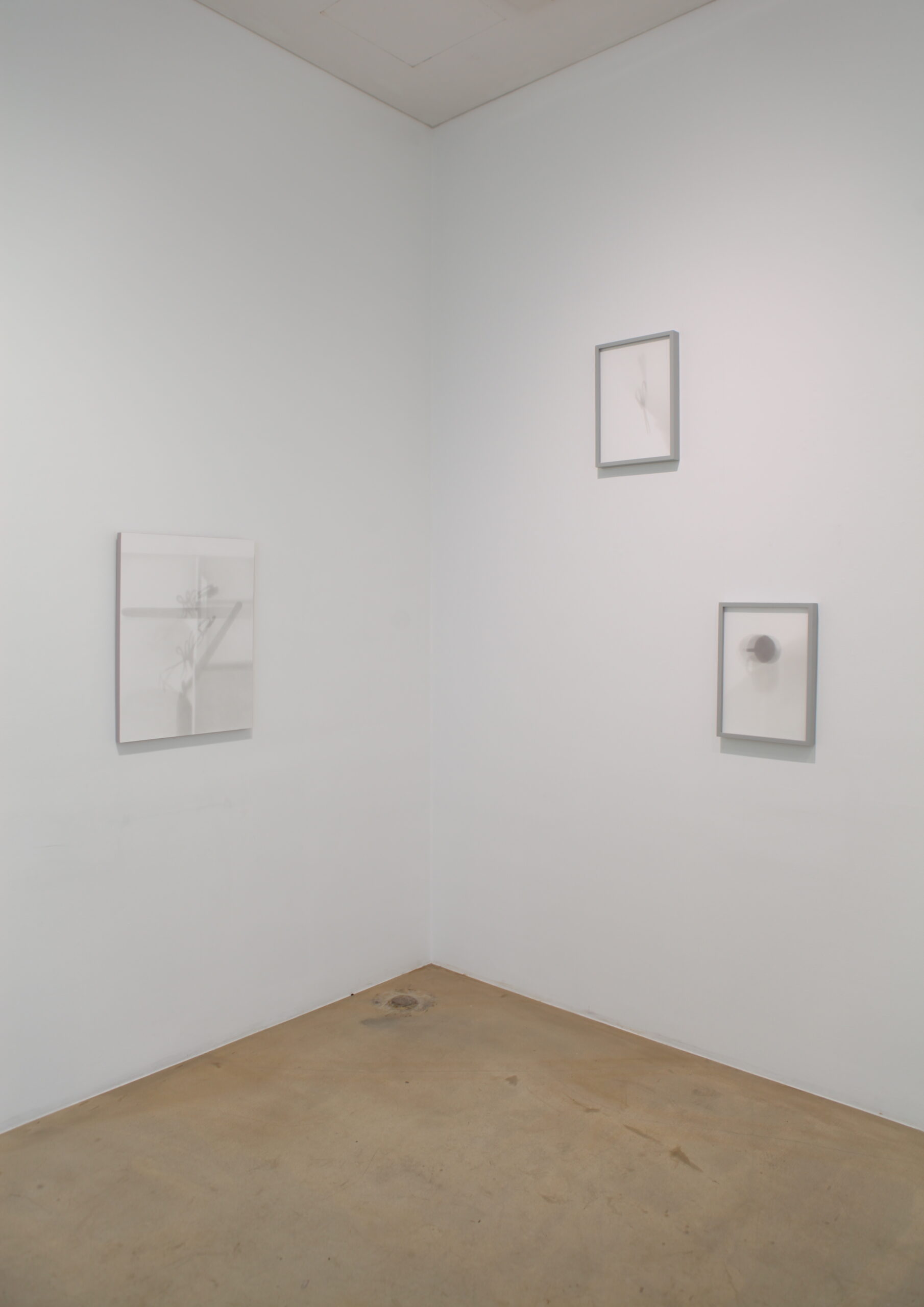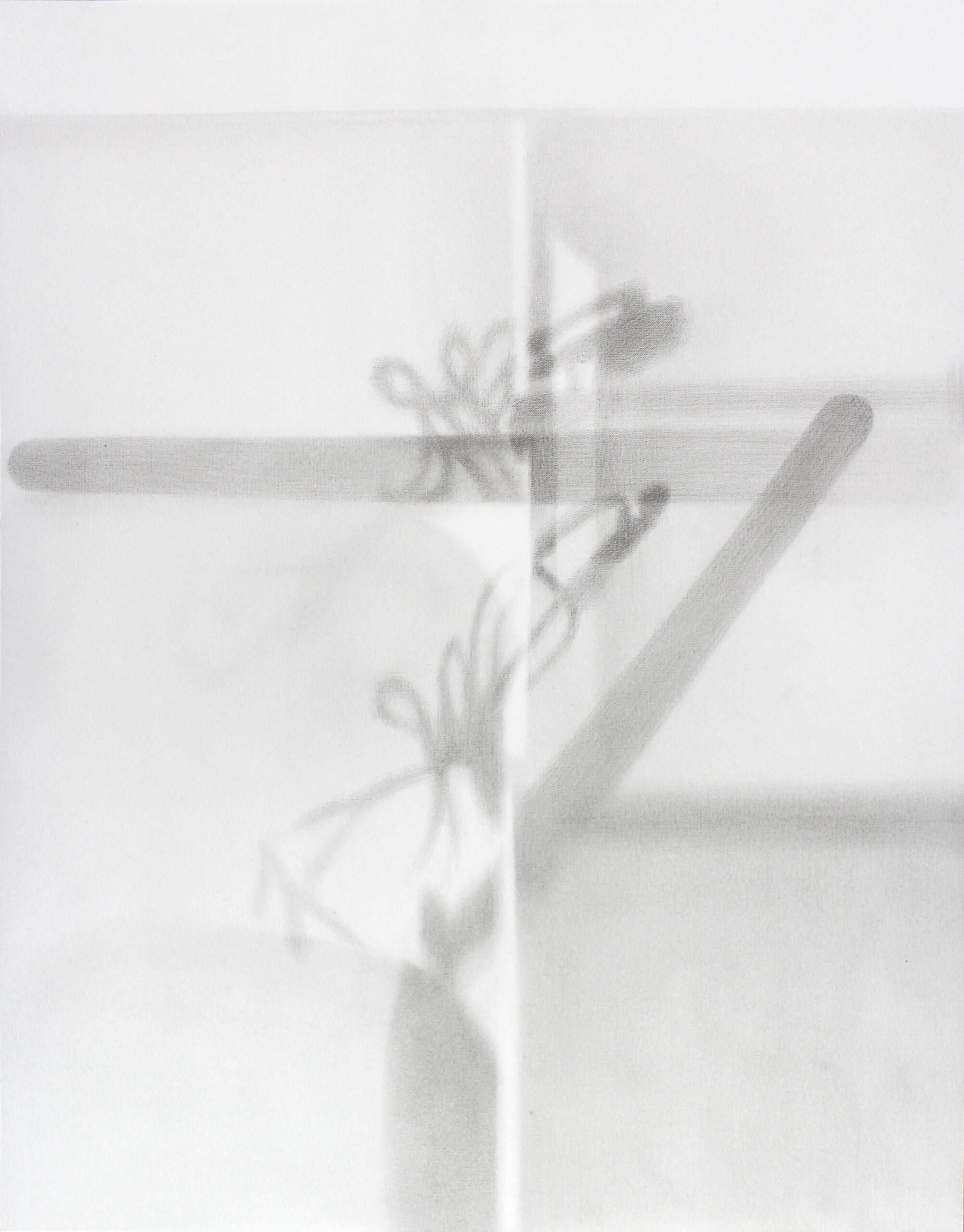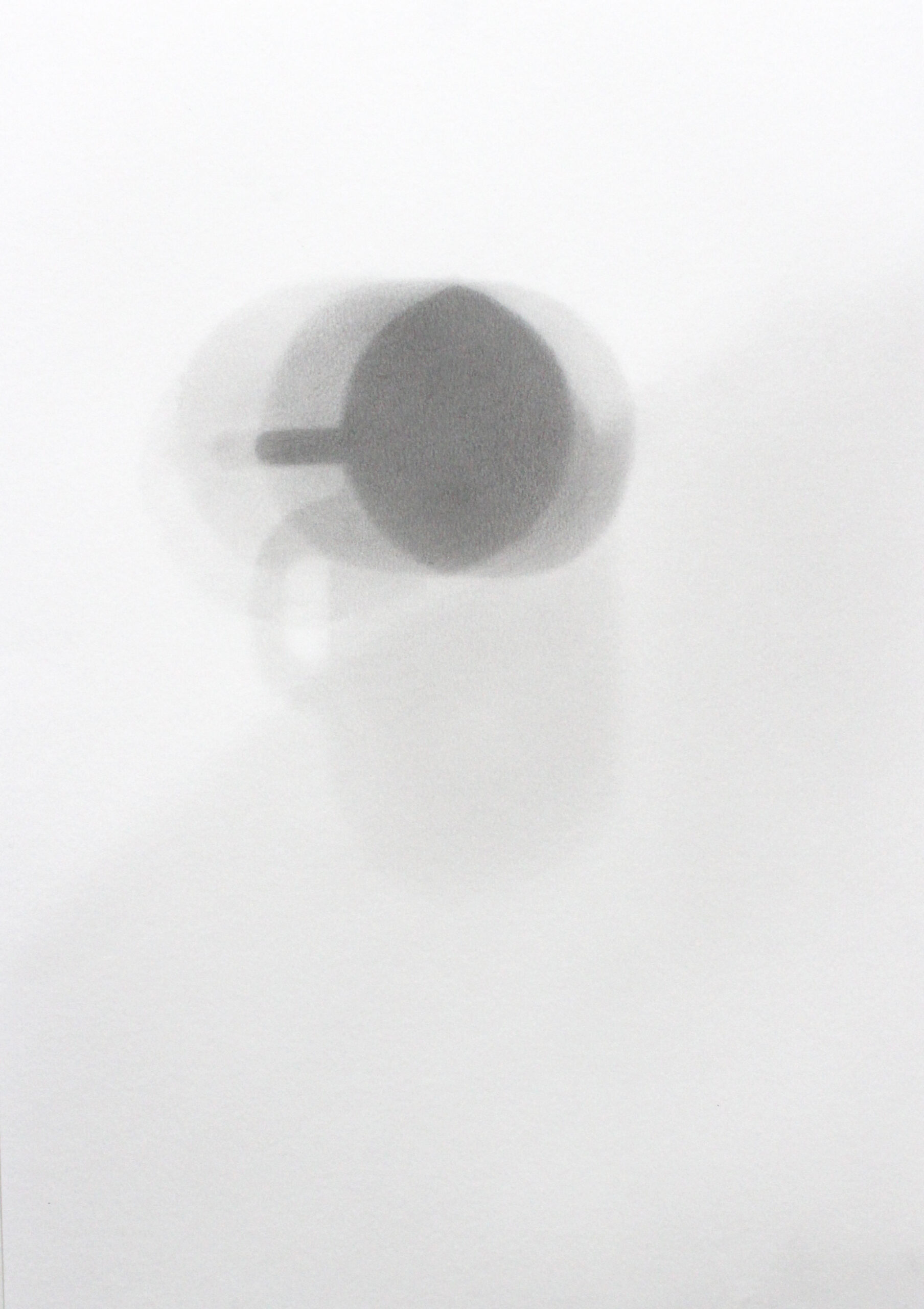*
(KR)
메를로 퐁티는 보는 행위에 ‘거리를 둔 소유’라고 표현했다. 그에 의하면 보는 행위는 다만 망막에 상이 맺히는 것 이상의 의미를 갖는, 세상을 이해하기 위한 총체적인 감각이다. 나의 시지각과 타인의 시지각을 모두 이해하게 될 때 – 내가 보면서 동시에 보여지는 총체적인 상황을 이해하게 될 때 – 우리는 모두가 가시적 세계에 놓여져 있음을 인식하게 된다. 다시 말해 우리는 시지각을 통해 세계와 관계를 맺는다.
그렇다면, 본 것을 그려낸다는 것은 어떤 의미인가? 다시 한 번 메를로 퐁티의 생각을 빌리자면, 예술가에 의해 탄생한 회화는 다만 물감 덩어리, 또는 이미지의 복제가 아닌, 세상과 관계를 맺는 또 하나의 존재다. 예술가는 자신의 작품을 통해 “세상에 대한 견해를 표명하는 것이 아니라, 자신의 시지각을 몸짓으로”1만든다.
전시 《재현의 방법》은 이러한 관점 – 사유로서의 회화라는 – 아래 열 명의 작가들을 초대하여 최근의 구상회화들을 살펴본다.
( . . . ) 박정인(b. 1991)은 연필과 종이라는 친숙하고 미완결적인 재료로, 빛이라는 조건부 아래 일시적으로 생성되는 대상을 그린다. 구체적 외형이 시간과 빛에 의해 그것의 그림자로서 나타날 때 미세한 흐름으로 연결되어 감각되는 대상, 시공간, 시선의 관계를 드러낸다. ( . . . )
어떤 것을 오랫동안 응시하고 그것의 형태를 떠냄으로써 존재에 다가가고자 하는 것은 정신과 육체의 이분법에서 벗어나고자 했던 메를로 퐁티의 철학 아래에 있다. 작가의 시선이 세계로 향해 현상을 관찰하고, 관찰한 것을 다시 육화한다는 점 역시 그렇다. 물리적 덩어리를 가진 작품은 세계 속에 존재하는 어떤 것이며, 다른 것들과 이웃하여 관계를 맺는 무엇이다. 그런 점에서 구상화에서의 조형성에 대한 문제는 현상과 존재에 대한 이해의 뒤에 따라오게 된다. 즉 캔버스 옆에 놓인 사건과 캔버스 위에 그려진 그림의 관계, 눈과 손이 결합된 신체가 만들어내는 관계가 그에 앞서 놓여진다. 대상의 표면을 몇번이고 훑어내는 눈과 손은 세계에 대한 지속적이고 끈질긴 질문이며, 내 앞에 – 또는 옆에 – 놓여진 것과 내 존재와의 관계를 쉼 없이 탐색한 결과이다. 전시 《재현의 방법》은 이러한 총체적 사유의 결과로서의 작품들을 더듬어가며 만들어낸 지도라고 해석해도 좋을 것이다.
1 『눈과 마음』, 모리스 메를로-퐁티, 김정아 역, 마음산책, 2008, 18쪽
(EN)
Seeing means more than forming an image on a retina: it is a holistic sense of understanding the world. In his essay Eye and Mind, Maurice Merleau-Ponty described the act of seeing as ‘having at a distance,’ that seeing is not a ‘will’ but an ‘event.’ According to him. Understanding both one‘s visual perception and that of other’s – being understanding the holistic situation that one sees and being seen at the same time, we recognize that everyone is situated in the visible world. In other words, we establish relationships with the world through visual perceptions. Merleau-Ponty contended the necessity of actions to change ‘events’ into these ‘perceptions’. Painting what one saw could be interpreted as ‘actions’ that he claimed. The born paintings from these actions are not just chunks of paint nor reproductions of images: they are something other that having relationship with the world. Through artworks, a visual perception of an artist “becomes gestures, not when he expresses opinions about the world.”
His philosophy becomes all the more interesting, when you think of the artworks that transfer virtual images back to paintings, which have started to appear in recent years. We are living in a world of virtuality and reality getting intertwined, and immaterial communications affecting overall everyday living. Yet, why are artists willing to re-materialize them? Why do their eyes refuse to reside in the virtual, and try to return to the real?
Starting with these questions, the exhibition Manners of Representation: A Piece of Cake invited following ten artists, who observe phenomena as if they were enchanted, and invoke perceptions by transferring forms of the observed back into artworks.
( . . . ) Jungin Park (b. 1991) depicts temporarily created objects under conditions of light. When specific forms appear as their shadows by the time and light, they become connected to fine flows to reveal the relationship among the perceived subjects, visual space and sight. ( . . . )
The characteristics of painting and the situation in the painting appear to be surrealistic descriptions reflecting the artist’s psychology, but certain parts of the paintings are actual events that have taken place. His paintings reveal a multilayered irony as facts, directions,
psychology and phenomena intersect.
Trying to approach existence by staring at something for a long time and extracting its form is under the influence of Merleau-Ponty’s philosophy to escape from the dichotomy of mind and body. So do artists gazing toward the world to observe phenomena, and incarnating what they have observed. A work of art with a physical mass is something that exists in the world, and something that neighbors other things. In this regard, questions on forms in figurative paintings follow understandings on phenomena and their existence. In other words, the relationship between events next to the canvas and the painted picture on it, and the relationship produced from the body of eyes and hands combined together, are placed before artists.
Eyes and hands that scan the surface of a subject over and over are persistent and tenacious inquiries about the world: They are the result of restless investigations for the relationship between what lies in the front – next to – and my existence. This exhibition Manners of Representation: A Piece of Cake can be interpreted as a map, projected by threading out the artworks as the results of these total perceptions.
.
.
